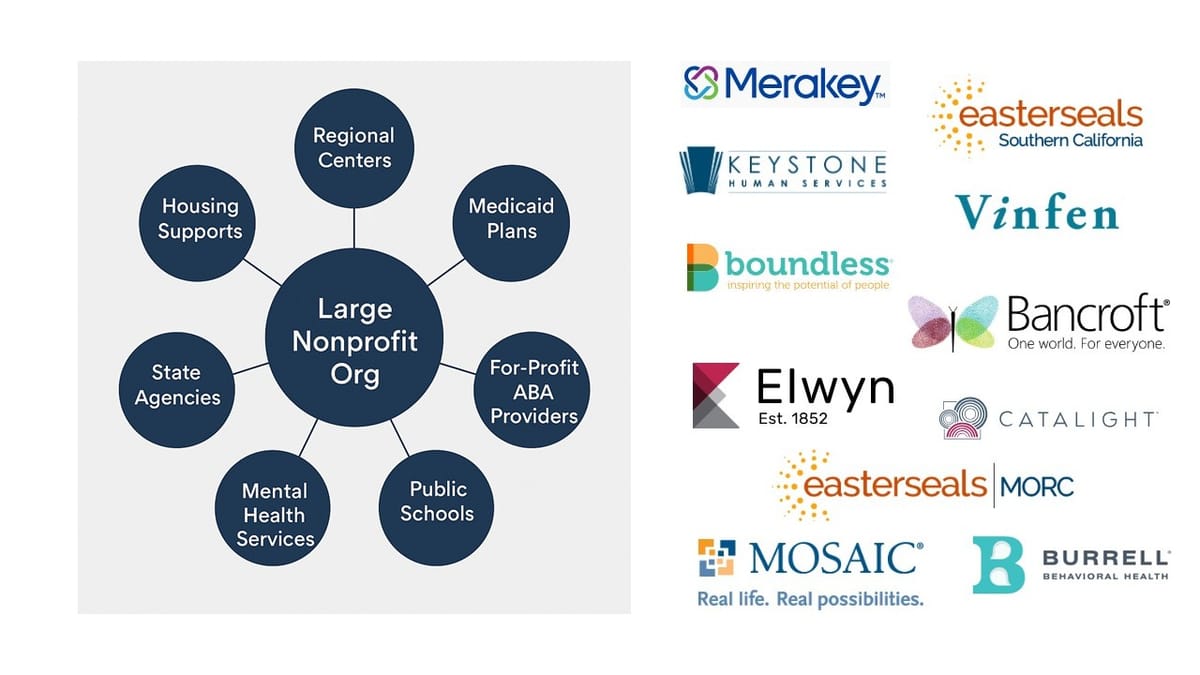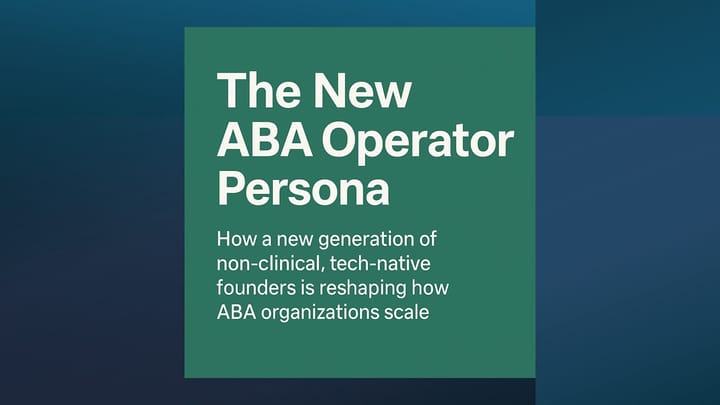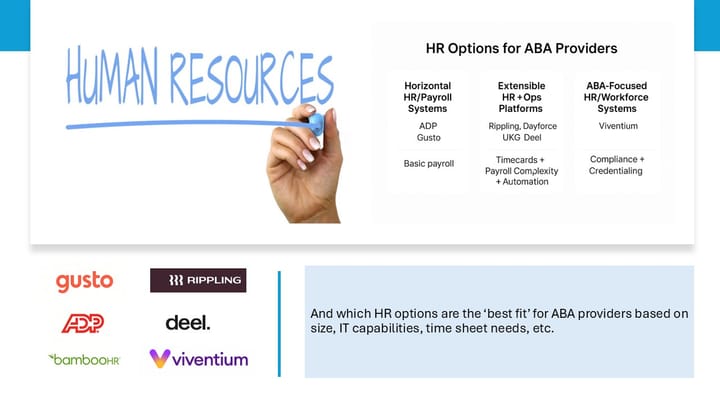The Nonprofit Giants of ABA: Delivering Care—and Managing a Referral Funnel

In autism services, we spend a lot of time talking about PE-backed platforms, for-profit roll-ups, and tech-first startups.
But operating steadily in the background—often with less visibility—are the nonprofit giants. Organizations like Merakey, Burrell, Catalight, Bancroft, Easter Seals, Elwyn, Vinfen, Keystone, and Boundless serve tens of thousands of families every year across home, clinic, school, and community settings.
And their role is more complex—and more strategic—than many for-profit players realize.
Dual Roles: Provider and Orchestrator
What makes these nonprofits unique is that they often operate in two distinct roles:
- They deliver ABA therapy directly across schools, clinics, and homes.
- They also contract out ABA services to external providers and community partners.
This creates a blended operational model: part provider, part fundholder, part care coordinator. It also places them in a powerful position across the care ecosystem—acting as referral sources, compliance enforcers, and strategic conveners.
Serving the Broader System
Most of these nonprofits do far more than ABA. Their program portfolio typically spans:
- IDD and residential support services
- Mental health and SUD treatment
- Public health partnerships
- Housing, employment, and educational supports
They work directly with schools, regional centers, Medicaid plans, and state agencies—often serving as the access point or funding gatekeeper for ABA services.
Oversight and Credentialing Complexity
Managing both direct care and contracted ABA delivery requires complex credentialing infrastructure that goes well beyond the needs of a single-clinic for-profit provider.
These organizations must:
- Track staff and contractor compliance across multiple states and credentialing bodies
- Align with Medicaid, commercial, and education-based payor requirements
- Report on training, background checks, license status, CEUs, and onboarding timelines
- Prepare for audits tied to grants, regional center contracts, and state oversight
The Tech Stack: Platform + Layers
Most large nonprofits use a core system—CentralReach, Salesforce, or Qualifacts are common choices. But few of these platforms handle all the needs natively.
That’s where augmentation comes in.
To meet operational complexity, leading nonprofits layer on:
- Credentialing trackers and compliance dashboards
- Automation tools (RPA, Zapier, bots) to eliminate manual entry
- Custom reporting for payors, boards, and regulators
- Data lakes or hosted databases that unify siloed systems
In many cases, they’re quietly ahead of their for-profit peers in recognizing the need for a composable tech stack—even if it’s assembled in pieces.
A Call to Attention—for Providers and Vendors
If you’re a for-profit ABA provider, some of your best growth opportunities may come from partnering with these nonprofits. They have funding, demand, and patients—but often seek partners who can deliver high-quality care with operational transparency.
If you’re a technology vendor, nonprofits may not ask for “more features”—they need tools that support care coordination, credential oversight, and cross-system accountability.
They may not post on LinkedIn every day. But make no mistake—they are shaping the future of access, funding, and oversight in the ABA space.



